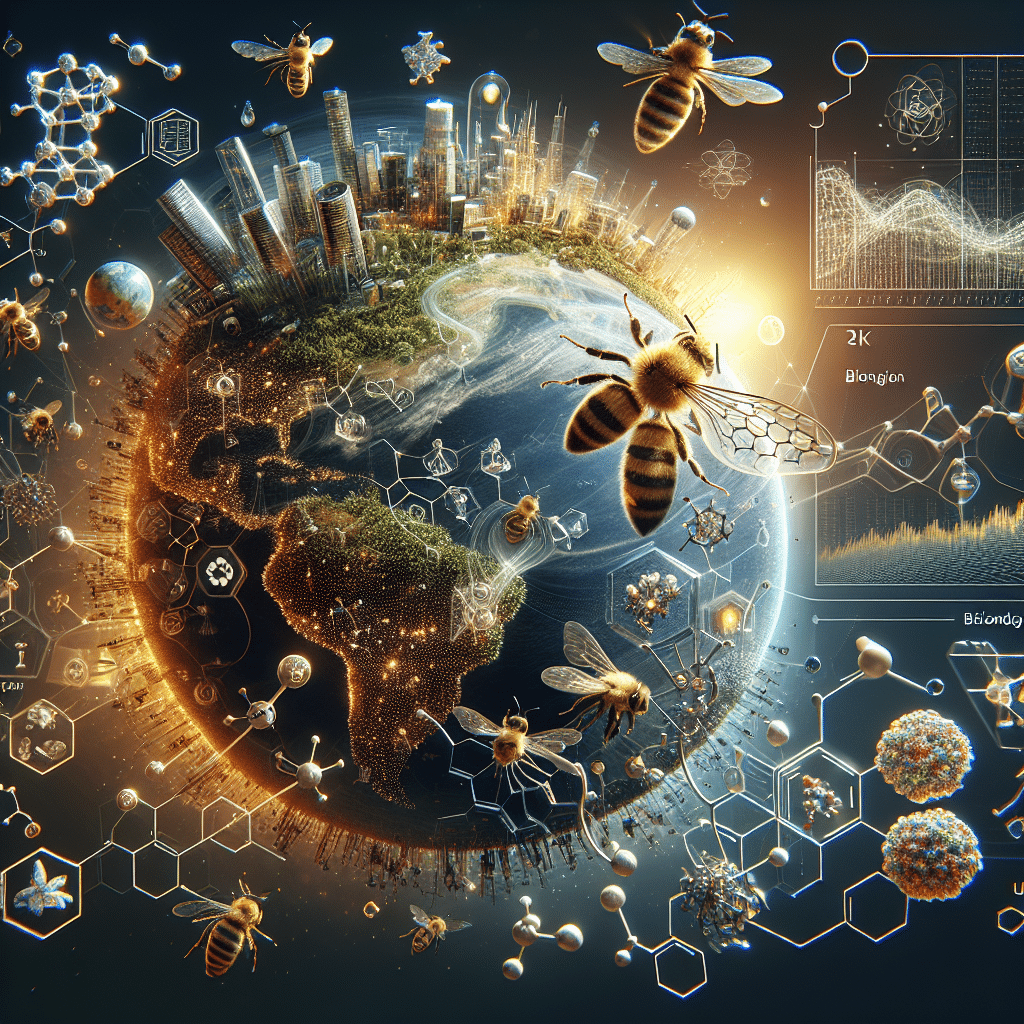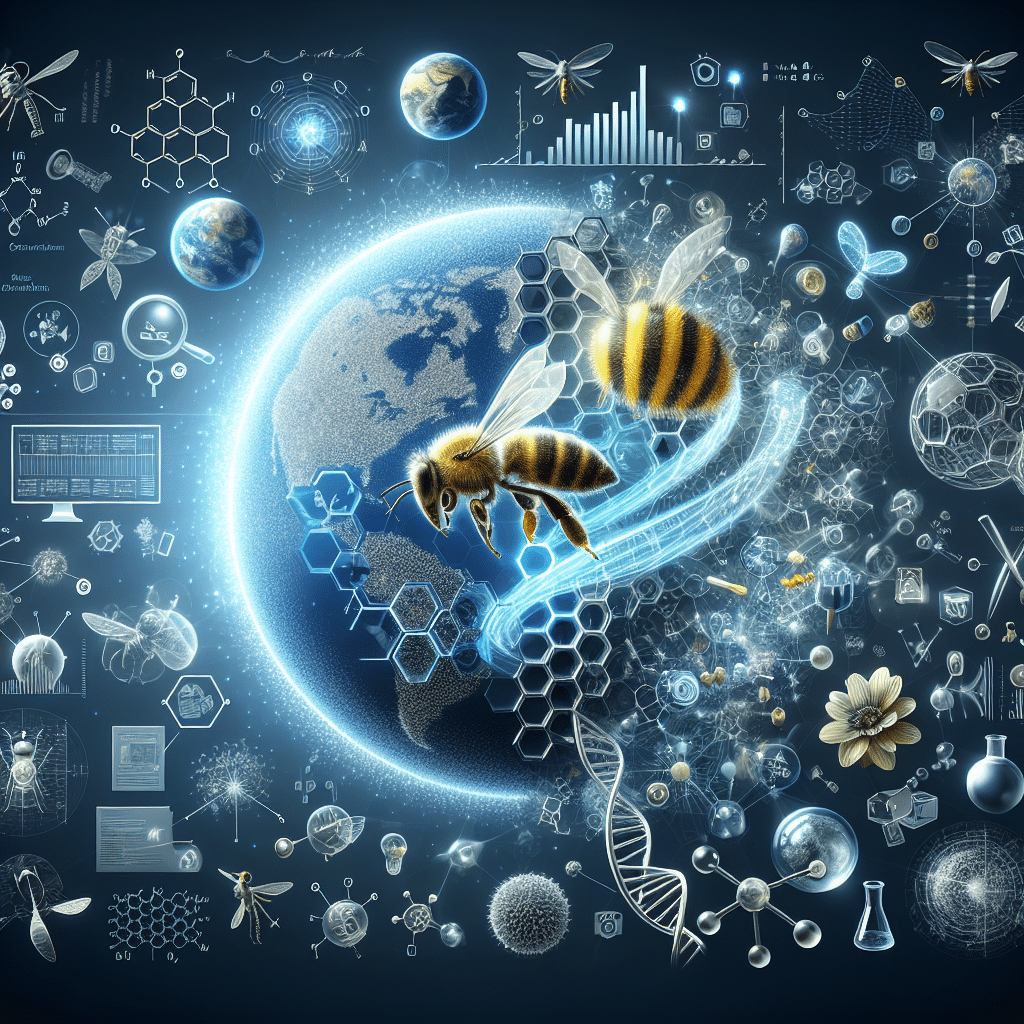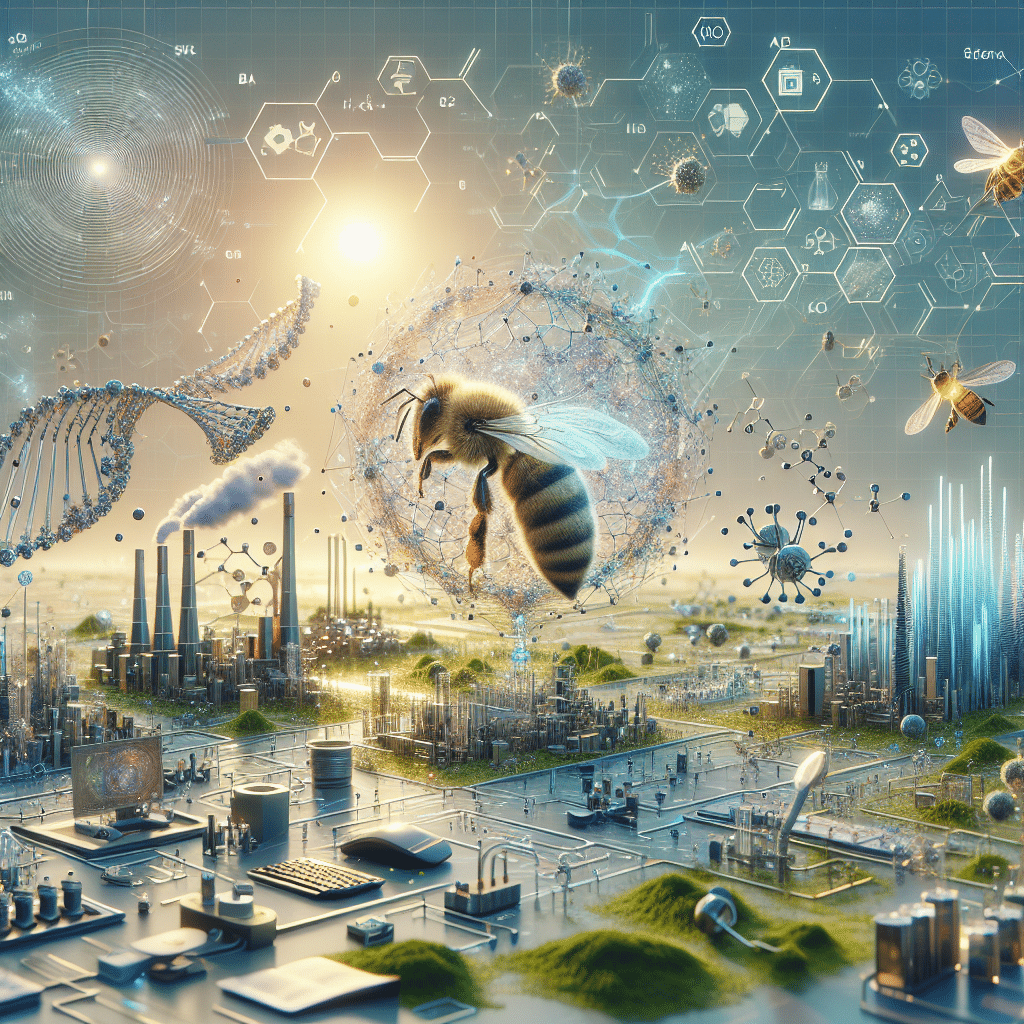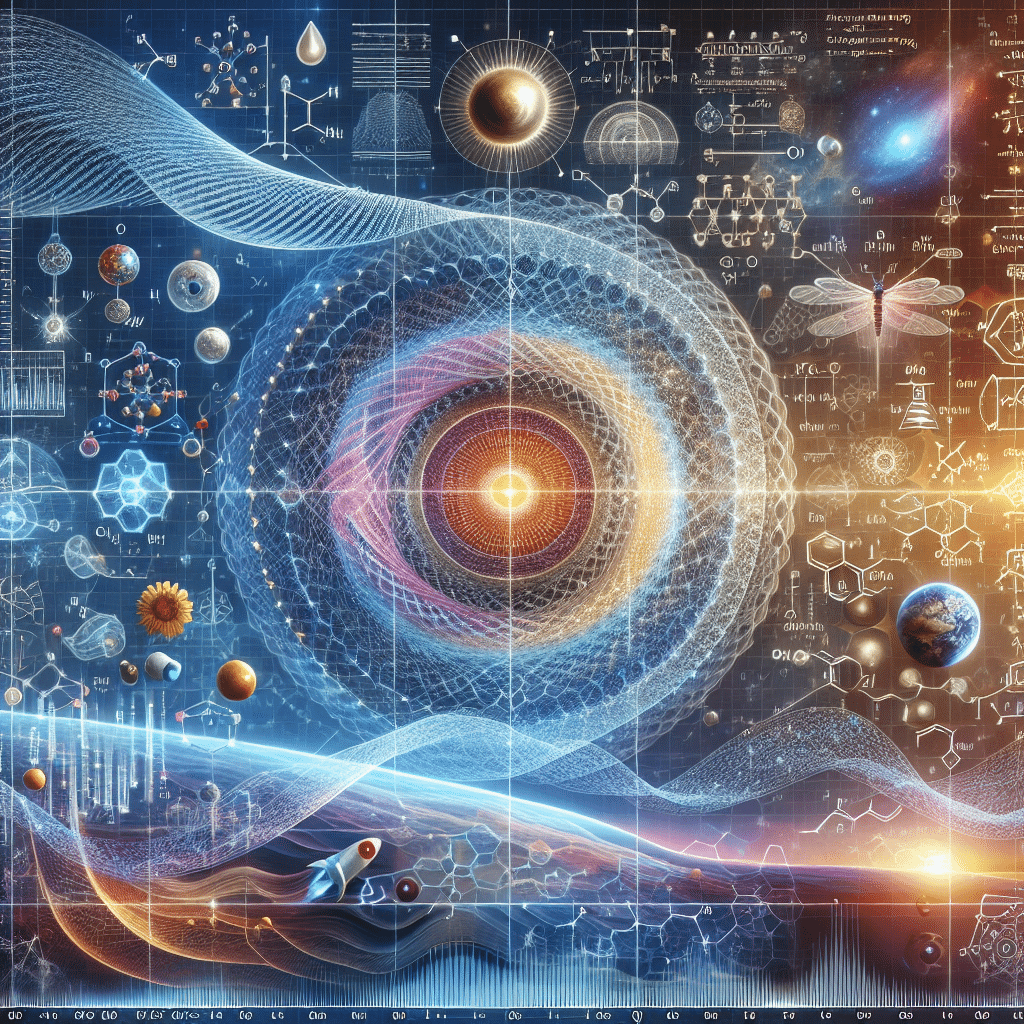Integrating the Law of Divine Oneness with Bee Theory
The convergence of quantum physics and spirituality has been a topic of growing interest, particularly in relation to the fundamental interconnectedness of the universe. Bee Theory, a wave-based model of gravity and universal interconnection, provides a theoretical framework that aligns with ancient spiritual principles, notably the Law of Divine Oneness. This article explores the intersections between these two domains, offering a scientific and philosophical perspective on how wave-based interconnectivity manifests in both the physical and metaphysical realms. By understanding the universe as a vast, coherent field of interacting waveforms, we can derive insights into consciousness, reality formation, and the ethical implications of an interconnected cosmos.



1. Introduction: The Convergence of Physics and Spirituality
1.1 The Need for a Unified Model
The historical separation between science and spirituality has long been a subject of philosophical debate. While classical physics favored a mechanistic, reductionist view of the universe, quantum mechanics introduced a paradigm shift, revealing the probabilistic, interconnected, and observer-dependent nature of reality. Bee Theory extends this understanding by proposing that all fundamental interactions—including gravity—are mediated by wave dynamics, offering a unified perspective that resonates with spiritual traditions emphasizing unity and oneness.
1.2 The Law of Divine Oneness: A Philosophical Overview
The Law of Divine Oneness is a fundamental spiritual principle stating that everything in existence is interconnected at the most fundamental level. This idea appears across multiple spiritual and philosophical traditions, including:
- Buddhism: The concept of interdependent origination (Pratītyasamutpāda) suggests that all phenomena arise in dependence upon other phenomena.
- Hermeticism: The principle of vibration states that everything is in motion and interconnected through vibrational energy.
- Quantum Mechanics: The phenomenon of quantum entanglement suggests that particles remain correlated regardless of distance, hinting at a deeper, non-local connectedness.
By integrating Bee Theory’s wave-based interconnection with the Law of Divine Oneness, we explore a scientific framework for understanding spiritual unity in a physical context.
2. The Wave-Based Nature of Reality: Insights from Bee Theory
2.1 Bee Theory and Wave-Based Interconnection
Bee Theory posits that the fabric of reality is composed of oscillatory waveforms that mediate all fundamental interactions, including gravity. Unlike the standard model, which describes forces as the exchange of discrete particles, Bee Theory suggests that gravity and other forces emerge from the resonance patterns of these wave structures.
Key Aspects of Wave-Based Interconnection in Bee Theory:
- Non-locality and Field Coherence: Just as quantum entanglement defies classical notions of space and time, Bee Theory suggests that all entities are embedded in a continuous wave field where information propagates instantaneously.
- Resonance and Harmonic Structures: Objects and beings are not isolated but exist as nodes within a larger vibrational network, much like standing waves in a medium.
- Gravitational Modulation through Wave Dynamics: The gravitational field, in this model, emerges as an interference pattern of fundamental waveforms, reinforcing the idea that space-time itself is an emergent property rather than a fundamental entity.
This model supports the concept that all things are fundamentally interconnected, aligning with the principles of the Law of Divine Oneness.
2.2 Consciousness as a Wave Phenomenon
If reality is fundamentally wave-based, consciousness itself must be understood within this paradigm. In Bee Theory, consciousness is not merely a byproduct of neural activity but rather an emergent phenomenon of coherent wave interactions across multiple scales.
- Quantum Brain Dynamics: Research in quantum cognition suggests that consciousness may arise from coherent quantum states within neural microtubules.
- Holographic Memory Storage: The brain, much like a hologram, may store information through interference patterns of wave frequencies, rather than through strictly localized neuron activity.
- Observer Effect and Reality Formation: Just as quantum wavefunctions collapse upon observation, human perception may actively shape the structure of reality through resonance and wave interactions.
Thus, consciousness and the universe are deeply intertwined, reflecting the core tenet of the Law of Divine Oneness.



3. Implications for Science, Spirituality, and Human Understanding
3.1 The Observer’s Role in Reality Formation
One of the most profound implications of this integration is the recognition that consciousness and observation are not passive phenomena but active participants in reality formation.
- Wave Function Collapse and Reality Selection: In quantum mechanics, a system exists in superposition until it is observed. Bee Theory extends this principle, suggesting that macroscopic reality itself emerges through the cumulative effect of conscious interactions with the wave field.
- Manifestation and Resonance Effects: Spiritual traditions suggest that thoughts and intentions influence reality. This notion finds scientific support in wave-based models where constructive and destructive interference patterns determine observable outcomes.
3.2 Ethical and Philosophical Consequences
Understanding reality as a unified wave-based system carries profound ethical implications:
- Interconnected Responsibility: If all actions ripple through the wave field, affecting the whole, then ethical decision-making must account for both local and non-local consequences.
- Holistic Approaches to Science and Technology: Medical, technological, and environmental advancements should align with principles of coherence and resonance rather than isolated, reductionist interventions.
- Spiritual Growth as Frequency Alignment: Many esoteric traditions describe spiritual evolution as a process of “raising one’s frequency.” Bee Theory provides a scientific basis for this concept, linking personal development to vibrational coherence with the universal field.
3.3 Applications in Modern Science and Future Research
- Quantum Computing and Wave-Based Information Processing: Utilizing resonance and coherence in computation may lead to breakthroughs beyond standard quantum algorithms.
- Energy Technologies Inspired by Resonance: Understanding wave harmonics could enable new forms of energy generation based on coherence rather than extraction.
- Medical Interventions Using Wave Dynamics: From brainwave entrainment to targeted frequency-based therapies, medical science could benefit from understanding the body as a dynamic wave system.
4. Conclusion: Toward a New Paradigm of Understanding
Bee Theory’s wave-based approach to universal interconnection provides a scientific foundation for spiritual concepts like the Law of Divine Oneness. By recognizing the universe as a coherent field of interacting waveforms, we gain deeper insights into consciousness, reality formation, and ethical responsibility. This integration not only bridges the gap between science and spirituality but also offers new pathways for technological innovation, holistic healing, and philosophical evolution.
The future of research in this field lies in experimental validation of wave-based interconnectivity, further exploration of quantum consciousness, and the practical application of resonance principles in science, technology, and personal development. As we refine our understanding of the wave nature of reality, we may come closer to fully realizing the profound truth that has been echoed across both spiritual and scientific traditions: everything is one.
References & Further Reading
- Bohm, D. (1980). Wholeness and the Implicate Order. Routledge.
- Penrose, R. & Hameroff, S. (2014). Consciousness in the Universe: A Review of the “Orch OR” Theory. Physics of Life Reviews.
- Laszlo, E. (2003). The Connectivity Hypothesis: Foundations of an Integral Science of Quantum, Cosmos, Life, and Consciousness. SUNY Press.
- Wheeler, J. A. (1990). Information, Physics, Quantum: The Search for Links. In Complexity, Entropy, and the Physics of Information.